School Highlights
Minnesota School of Business-Rochester served 183 students (73% of students were full-time).
The college's student:teacher ratio of 12:1 was lower than the state community college average of 22:1.
Minority enrollment was 32% of the student body (majority Hispanic and Asian), which was less than the state average of 42%.
School Overview
Minnesota School of Business-Rochester
(MN) Community College Avg.
Carnegie Classification
Item not available
Associate's Colleges: Mixed Transfer/Career & Technical-Mixed Traditional/Nontraditional
Institution Level
Less than 2 yrs
At least 2 but less than 4 years
Institution Control
Public
Public
Total Faculty
15 staff
153 staff
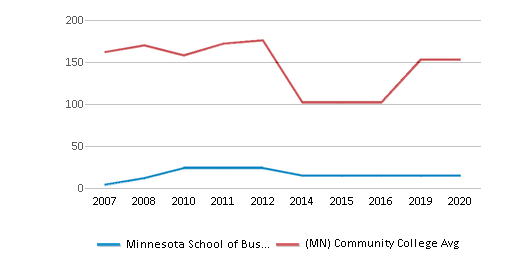
Student Body
Total Enrollment
183 students
2,555 students
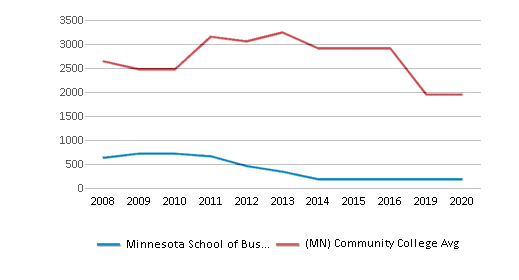
Student : Teacher Ratio
12:1
22:1
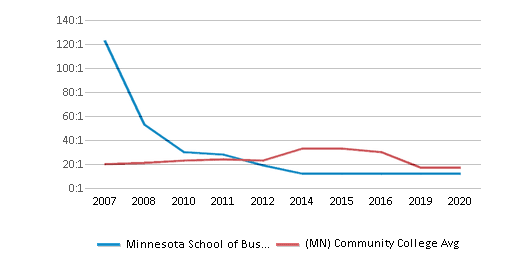
# Full-Time Students
134 students
915 students
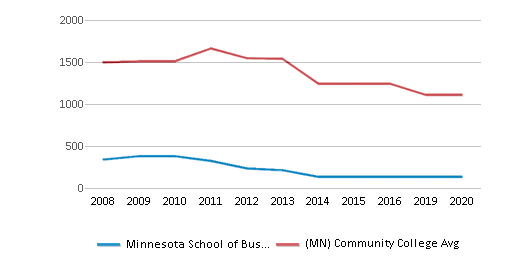
# Part-Time Students
49 students
1,808 students

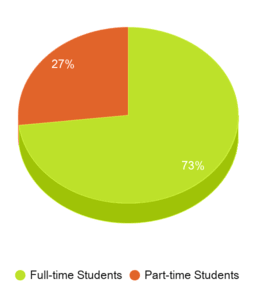
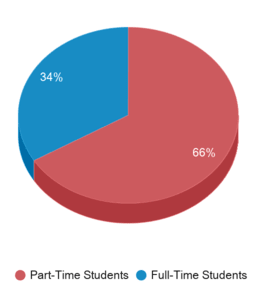
# Enrollment Undergraduate
271 students
372 students
# Full-Time Undergraduate Students
134 students
842 students
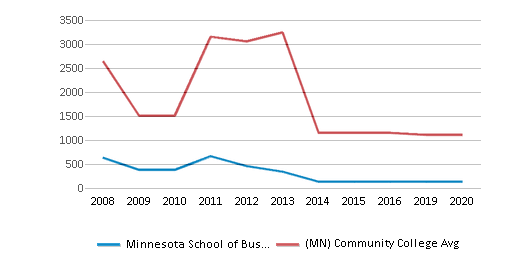
# Full-Time Graduate Students
n/a
38 students
# Part-Time Undergraduate Students
n/a
1,771 students
# Part-Time Graduate Students
n/a
12 students
Total Dormitory Capacity
n/a
116 students
% American Indian/Alaskan
1%
1%
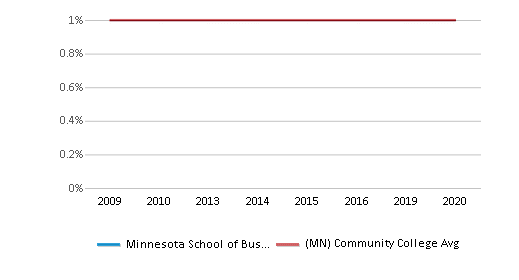
% Asian
3%
6%
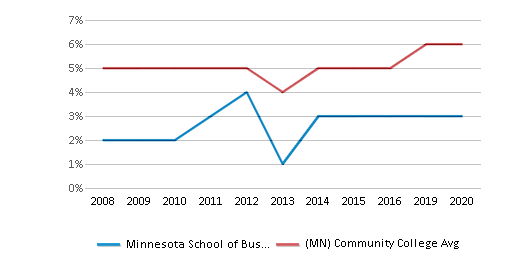
% Hispanic
3%
8%
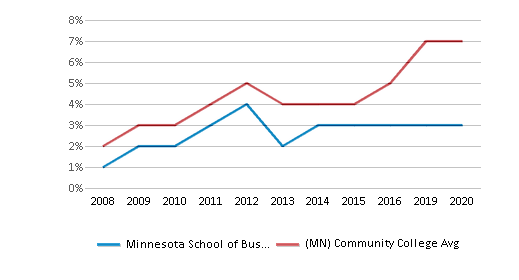
% Black
1%
15%
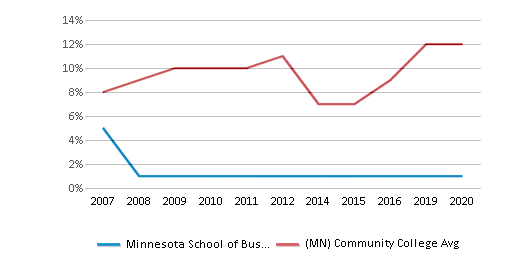
% White
68%
58%
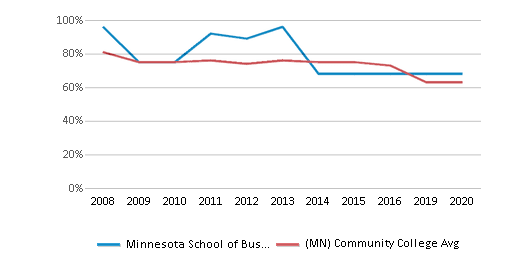
% Hawaiian
n/a
1%
% Two or more races
n/a
4%
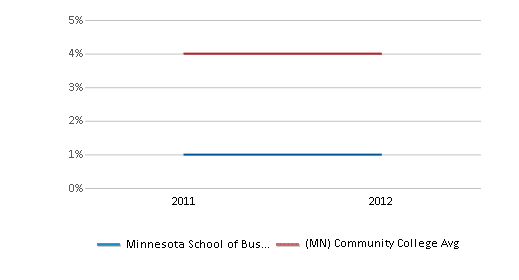
% Non Resident races
n/a
1%
% Unknown races
24%
6%
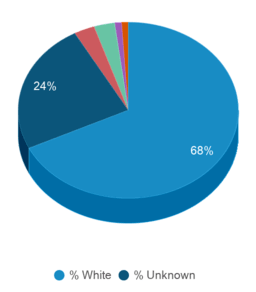
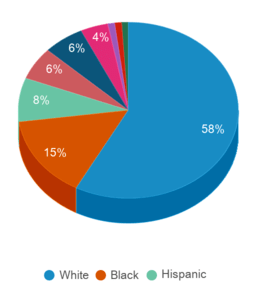
Diversity Score
0.54
0.63
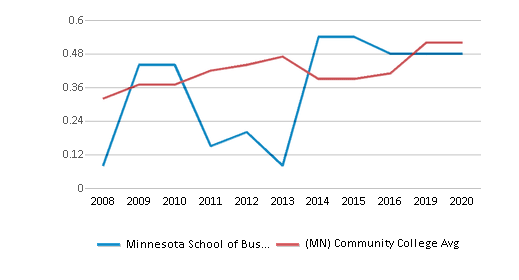
College Completion Rate (Students who graduate in less than 4 years)
n/a
0.3421%
College Completion Rate (Students who graduate in 4 years or more than 4 years)
n/a
0.5652%
Average Graduate Earnings (10 Years)
$35,200
$36,900
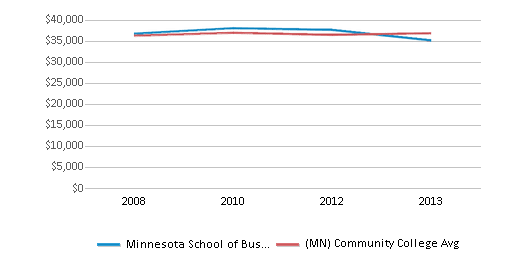
Tuition and Acceptance Rate
In-State Tuition Fees
$14,040
$5,489
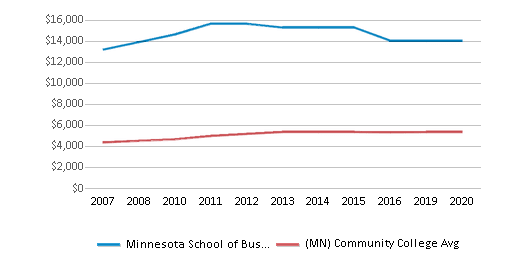
Out-State Tuition Fees
$14,040
$6,145
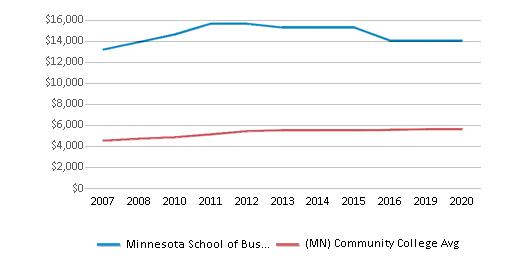
% Students Receiving Some Financial Aid
100%
86%
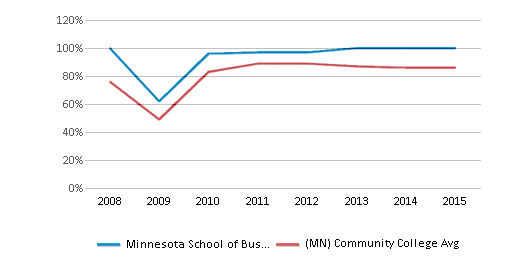
Median Debt for Graduates
$27,889
$13,775

Median Debt for Dropouts
$9,500
$7,253
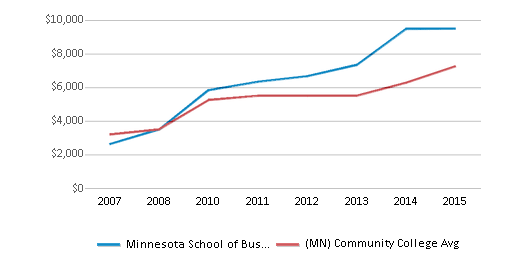
Acceptance Rate
100%
83%
SAT Reading
n/a
625
SAT Math
n/a
600
SAT Writing
n/a
565
ACT Composite
n/a
24
ACT English
n/a
24
ACT Math
n/a
23
ACT Writing
n/a
8
Source: 2020 (or latest year available) Integrated Postsecondary Education Data System (IPEDS)
Frequently Asked Questions
How much does Minnesota School of Business-Rochester cost?
Minnesota School of Business-Rochester's tuition is approximately $14,040 for In-State students and $14,040 for Out-State students.
What is the acceptance rate of Minnesota School of Business-Rochester?
The acceptance rate of Minnesota School of Business-Rochester is 100%, which is higher than the state average of 83%.
Recent Articles

How To Craft the Perfect College Admissions Essay
Read on to learn the ins and outs of crafting the perfect college application essay.

Obtaining Your Bachelor's Degree at a Community College
Explore the evolving landscape of community colleges offering bachelor's degrees, addressing affordability, accessibility, and workforce needs.

A to Z of Community College Certificates and Courses
From business and healthcare to technology and skilled trades, the article showcases the breadth of options available to students seeking to enhance their knowledge, develop new skills, or pursue career advancement.





